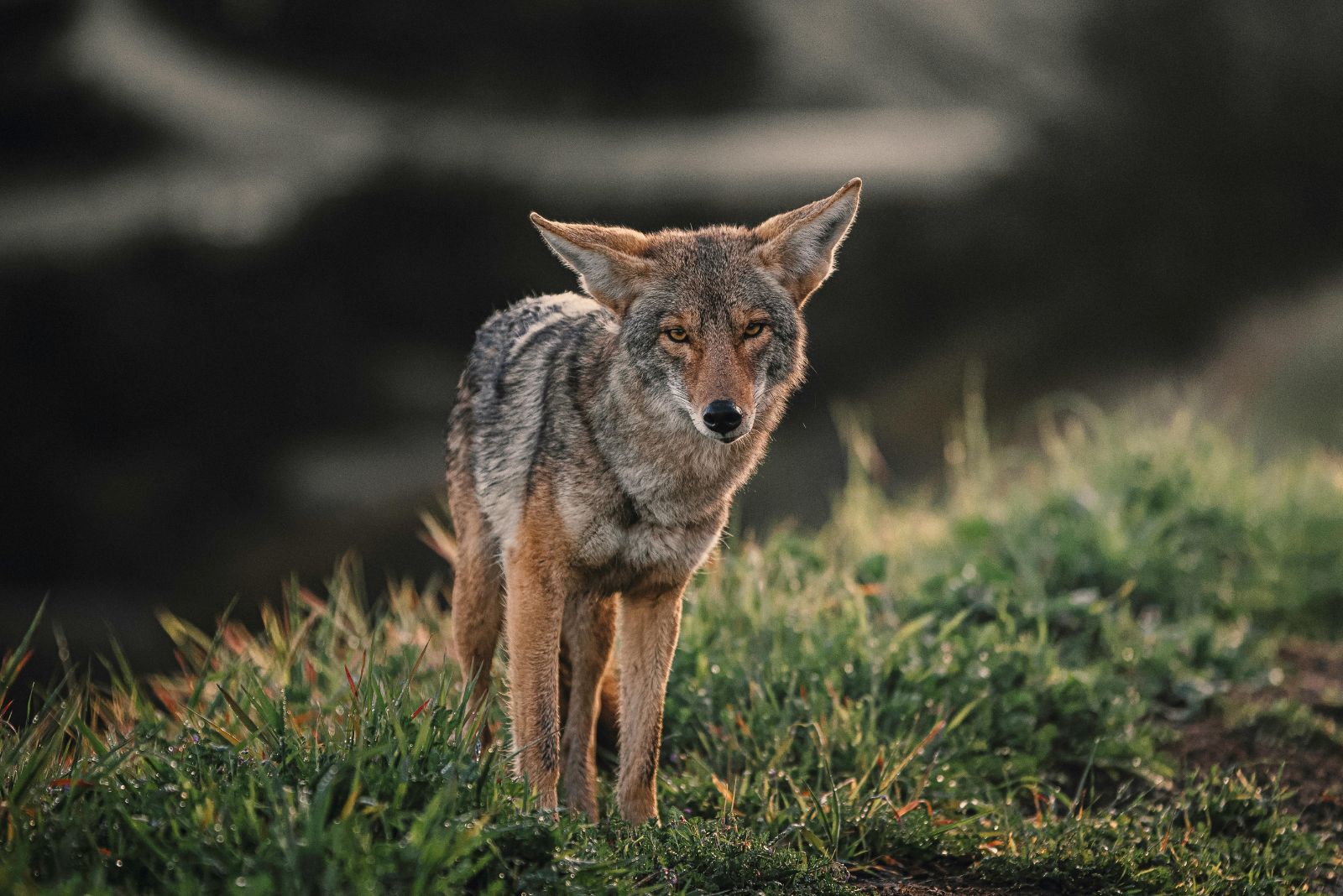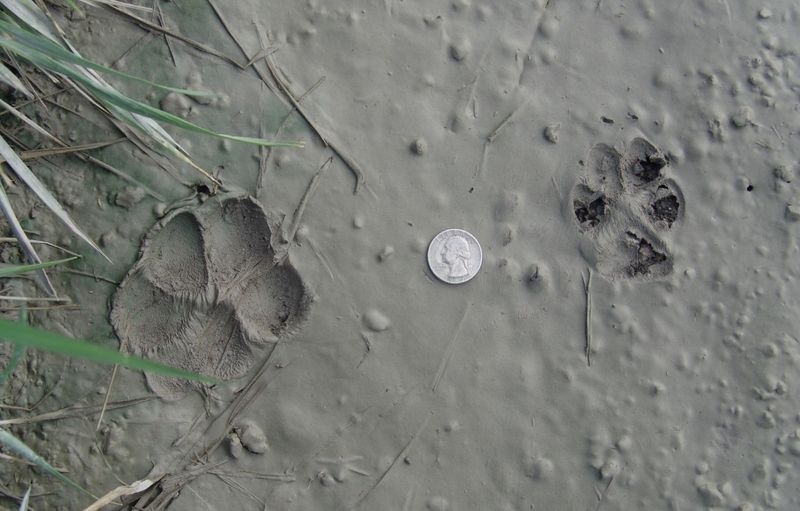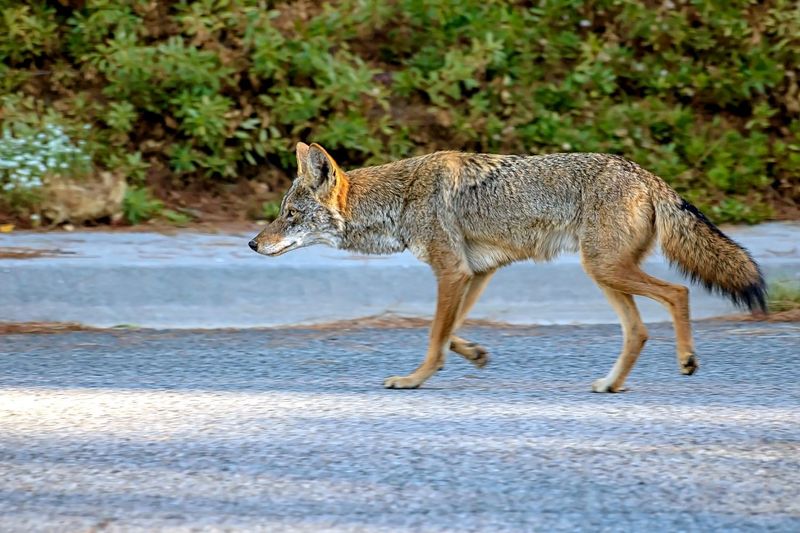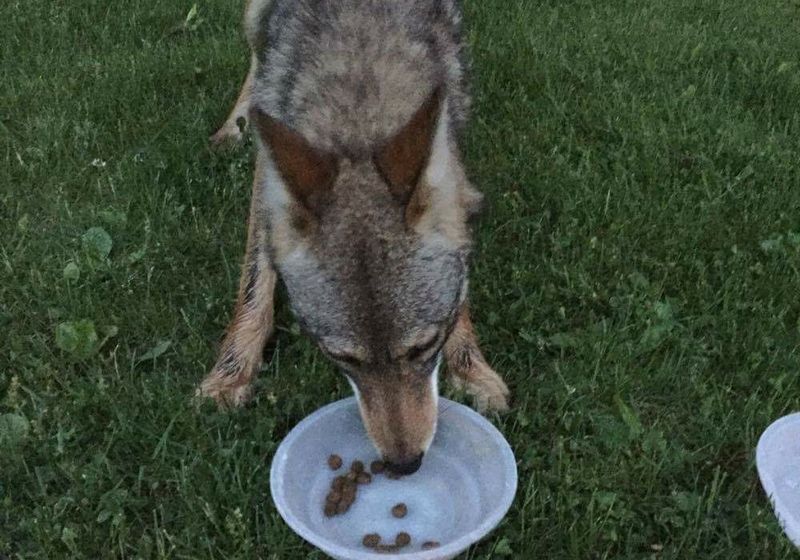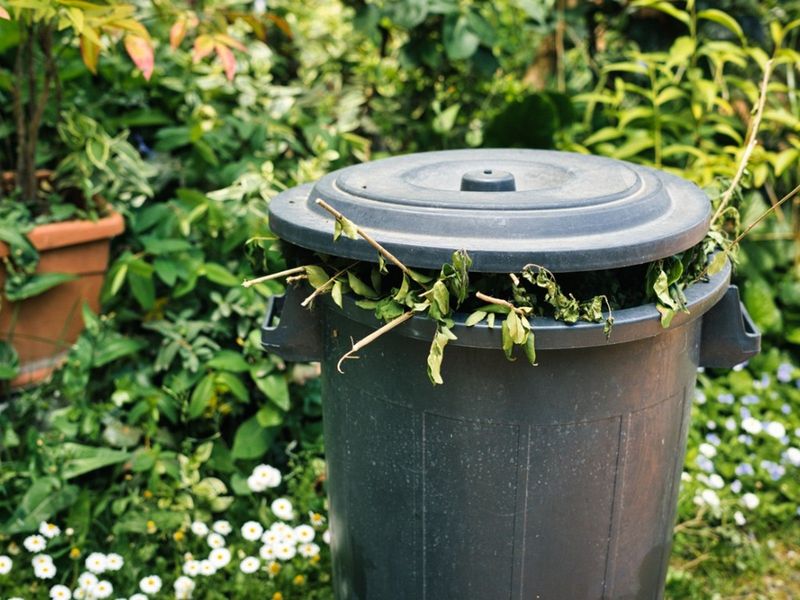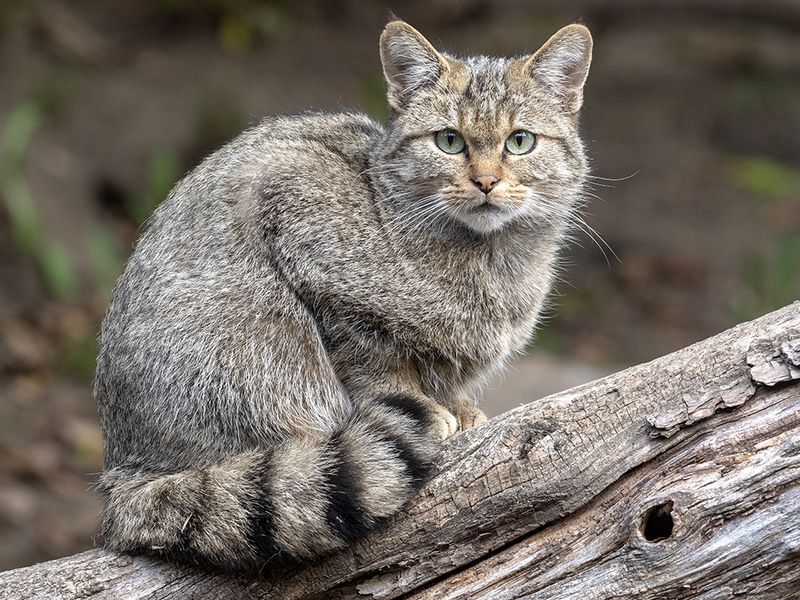Coyotes move through North Carolina neighborhoods with a quiet confidence that often leaves no trace at first glance.
Many homeowners never realize one slipped through until they spot a small hint tucked into the grass or dirt. These animals walk with purpose, placing each paw almost exactly in front of the other, leaving a trail that looks more like a straight line than a meandering path.
That tidy pattern can tell a story long after the visitor is gone. Once you recognize it, you start to see your yard in a whole new light.
1. Oval Paw Prints In A Straight Line As The Main Sign
A single, narrow set of tracks shaped like an oval paw print is your biggest clue. Coyote tracks show four toe pads arranged in a tight oval pattern, with claws visible at the tips.
Unlike dog prints that wander all over, coyote tracks follow an almost perfectly straight line. Each print measures about two to three inches long.
Check soft dirt, mud, or snow near your fence line or garden beds where coyotes typically patrol at dawn or dusk.
2. Scat Left In Visible Spots
Coyote droppings often appear in open areas like the middle of your lawn or along pathways. This behavior marks their territory and sends messages to other animals nearby.
The scat typically contains fur, bones, seeds, or berries, reflecting their varied diet. It looks rope-like and tapered at the ends, usually darker in color.
Finding these droppings means a coyote felt comfortable enough to claim your yard as part of its regular route through the neighborhood.
3. Missing Pet Food Or Water Bowls Licked Clean
Ever notice your outdoor pet dishes mysteriously empty by morning? Coyotes are opportunistic feeders who won’t pass up an easy meal left outside overnight.
They’re smart enough to remember where food sources are located and will return regularly. The bowls might be tipped over or moved from their original spot.
If you’re consistently finding empty dishes without seeing your pets eat, a nighttime visitor could be helping themselves to the leftovers you left out.
4. Disturbed Trash Or Compost Areas
Trash cans tipped over or compost bins with scattered contents suggest a hungry coyote stopped by for a snack. These animals have strong noses and can smell food from far away.
Look for specific damage patterns like chewed plastic bags or bins with claw marks. Coyotes are persistent and surprisingly strong when motivated by hunger.
They prefer raiding trash during quiet hours when humans are asleep, making it easy to miss their visits entirely until you see the mess.
5. Anxious Behavior From Your Pets
Your dog or cat might sense danger before you do. Pets acting unusually nervous, refusing to go outside, or barking at seemingly nothing could be detecting coyote scent markers.
Dogs may pace near windows facing the yard or whine when let out after dark. Cats might refuse their usual outdoor adventures altogether.
Animals have incredible instincts about predators in their territory, so trust their reactions when they seem spooked without obvious reason in familiar spaces.
6. Eerie Howling Or Yipping Sounds At Night
That haunting chorus you heard last Tuesday wasn’t neighborhood dogs having a party. Coyotes communicate through distinctive howls, yips, and barks that sound almost musical but wildly different from domestic dogs.
They’re most vocal during breeding season from January through March. The sounds carry far, especially on quiet nights, echoing through subdivisions.
Hearing these calls means coyotes are actively using the area around your home, even if you never spot them during daylight hours when they rest.

